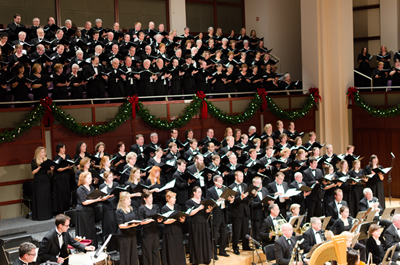The Asheville Chamber Music Series opened its 59th season at the Unitarian Universalist Church of Asheville with one of the finest and most versatile touring clarinet trios, the Kavafian-Schub-Shifrin Trio, featuring violinist/violist Ani Kavafian, pianist André-Michel Schub and clarinetist David Shifrin. Their intriguing and eclectic program, heavily slanted toward the twentieth century with works of Mozart, Bartók, Stravinsky, and Bolcom, was thematically integrated through its various dance-inspired movements. The mettle and technical chops of each player were put to the test again and again, and what emerged was a marvelous and musically deep consensus of interpretation one only hears in the world’s best players.
Opening the program was Mozart’s Trio in E-flat for clarinet, viola, and piano, K. 498 (“Kegelstadt Trio”). The work was composed in 1786 while Mozart was at a skittles alley (kegelstett) for his clarinet-playing friend Anton Stadler and pianist Franziska von Jacquin, sister of Mozart’s friend Gottfried von Jacquin, who was said to have been one of Mozart’s favorite piano pupils. These musicians were joined by Mozart himself on the viola part in the work’s premiere. It was charming as a program opener, with its substitution of the mellow blending of the alto-voiced viola for the customary violin in classical-era trios, and its unhurried elegance. The second movement Menuetto was performed with a stunning variety of dynamic gradations and articulations which inflected the music with the aura of intelligent speech. The third movement Rondeaux: Allegretto exhibited the care great artists take to bring even the smallest musical details to life, the least of which is to enliven each return of the “A” music.
Bartók’s Contrasts for Violin, Clarinet and Piano was commissioned by violinist Joseph Szigeti and clarinetist Benny Goodman in 1938. This was to be his only chamber work to employ a wind instrument. The original plan was to have each of the two movements recorded on one record side for a total of six minutes, but the composer more than doubled the length of the work by adding a middle slow movement. The first movement “Verbunkos” shows the composer’s homage to stylized national dance which he had studied closely and incorporated into his early works. It begins with a march, but evolves into a volatile mix of swirling, snarling passagework. The player’s profound understanding of style informed their inspired performance of this work. Kavafian dug into her strings (a gorgeous 1736 Muir McKenzie Stradivarius) to generate the requisite raw energy at the Hungarian core of the piece. Shifrin’s many rhapsodic roulades were effortlessly executed throughout the range of his instrument. The middle movement “Relaxation,” exhibits moments of magical stillness one associates with other “night music” Bartók composed. It opens with slow homo-rhythms in clarinet and violin against low piano rumbles. Simultaneously mirroring each other’s lines, the clarinet and violin crept eerily through the movement, with all three instruments casting their spell in mesmerizing synergy. The final movement “Sebes” (Fast Dance) opens with the rawest sort of “village fiddler” scrapings on the retuned (scordatura) violin before the motor-rhythm scamper ensues. There was furious working over of the sort of narrow-ranged motives one hears in folk music, coupled with ebullient, expansive melodies. Ever concentrated on variety, Bartók threw in a mysteriously muted contrapuntal section, perhaps a foil to the later extroverted counterpoint which sounded exactly like New York traffic, complete with honking horns. Bartók moved to New York later in 1940, but perhaps mentally he was already there.
Following intermission was Stravinsky’s Suite from L’Histoire du Soldat (1919). The work originally existed as a “pocket theater” piece scored for 3 actors, a female dancer and 7 instruments. Packaged as such it would have been a less expensive work to perform in post-WWI-ravaged Europe, but even with these concessions to expediency, the piece fell victim to closures caused by influenza outbreaks and was resurrected only in 1924. The composer arranged the concert suite for clarinet trio in deference to his benefactor, amateur clarinetist Werner Reinhardt, to whom he gave the score. Stravinsky drew on the old legend of Faust, here a poor soldier who sells his soul to the Devil by relinquishing his prized violin, in return for “youth, wealth, and power.” The heart of Stravinsky’s music is its rhythmic insistency, a relentless motor drive which is infused with jazz elements. The trio performed the suite with an imaginative narrative quality, with the “scratching” motive of the soldier’s violin ever present. Most striking were the three dances in movement four — tango, waltz, and ragtime — each delivered with a lurching sauciness in violin and clarinet hilariously countered at times by the straight-man role of the pianist.
Ending the program were 6 ragtimes of Joplin, Joseph Lamb, James Scott, and William Bolcom, bundled into the suite arranged by the latter composer and titled Afternoon Cakewalk (1979). With changes in the clarinet from A, B-flat, and E-flat instruments, and with the care the trio took to vary the many details of style, no two rags in the set sounded the same. The movements (“Easy Winner,” “Heliotrope Bouquet,” “Ethiopia Rag,” “Frog Legs Rag,” “Graceful Ghost,” and “Incineratorag!”) were rearranged to end the set with “Easy Winner,” clearly the take-away message of this exceptional concert.












